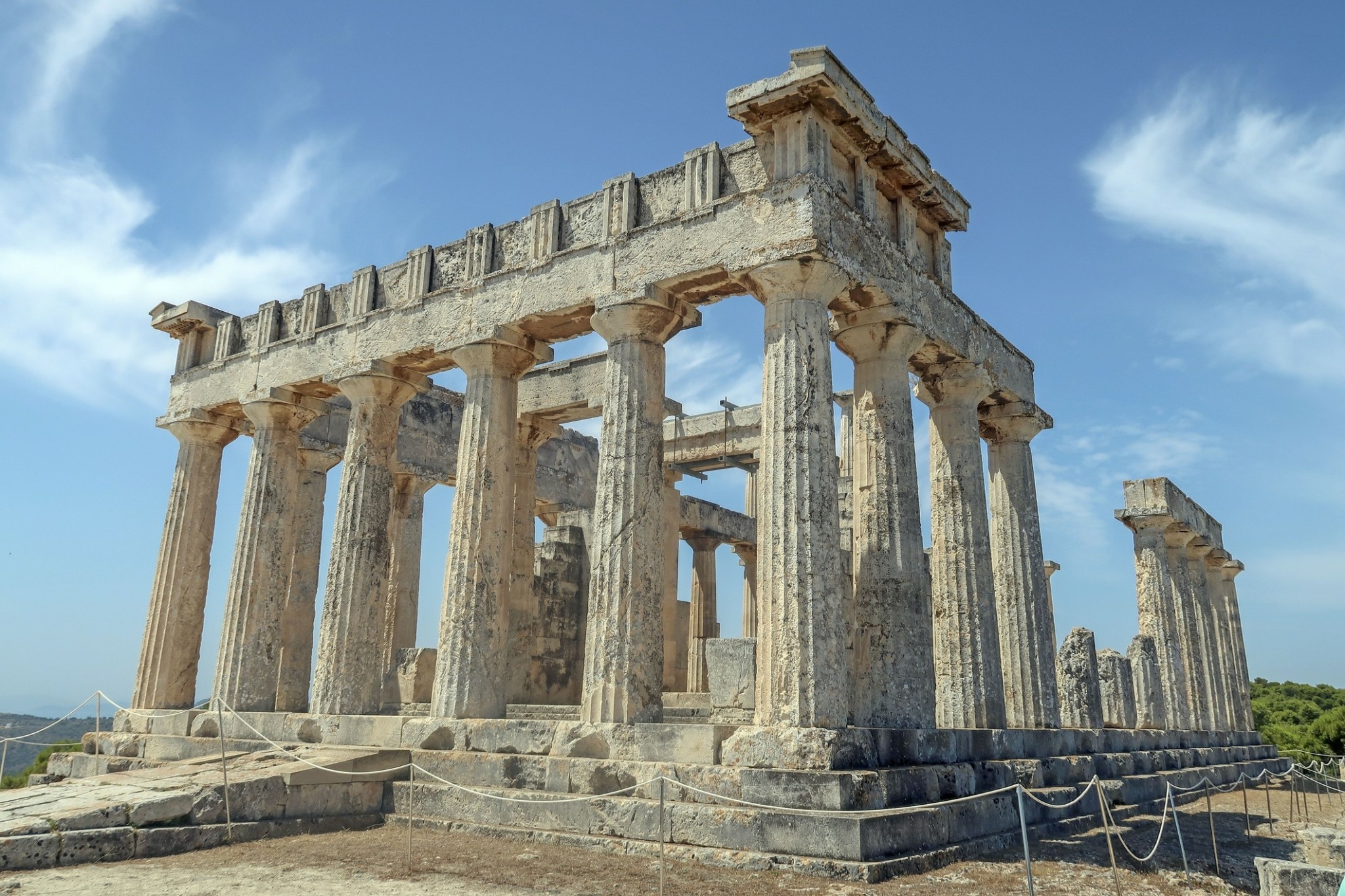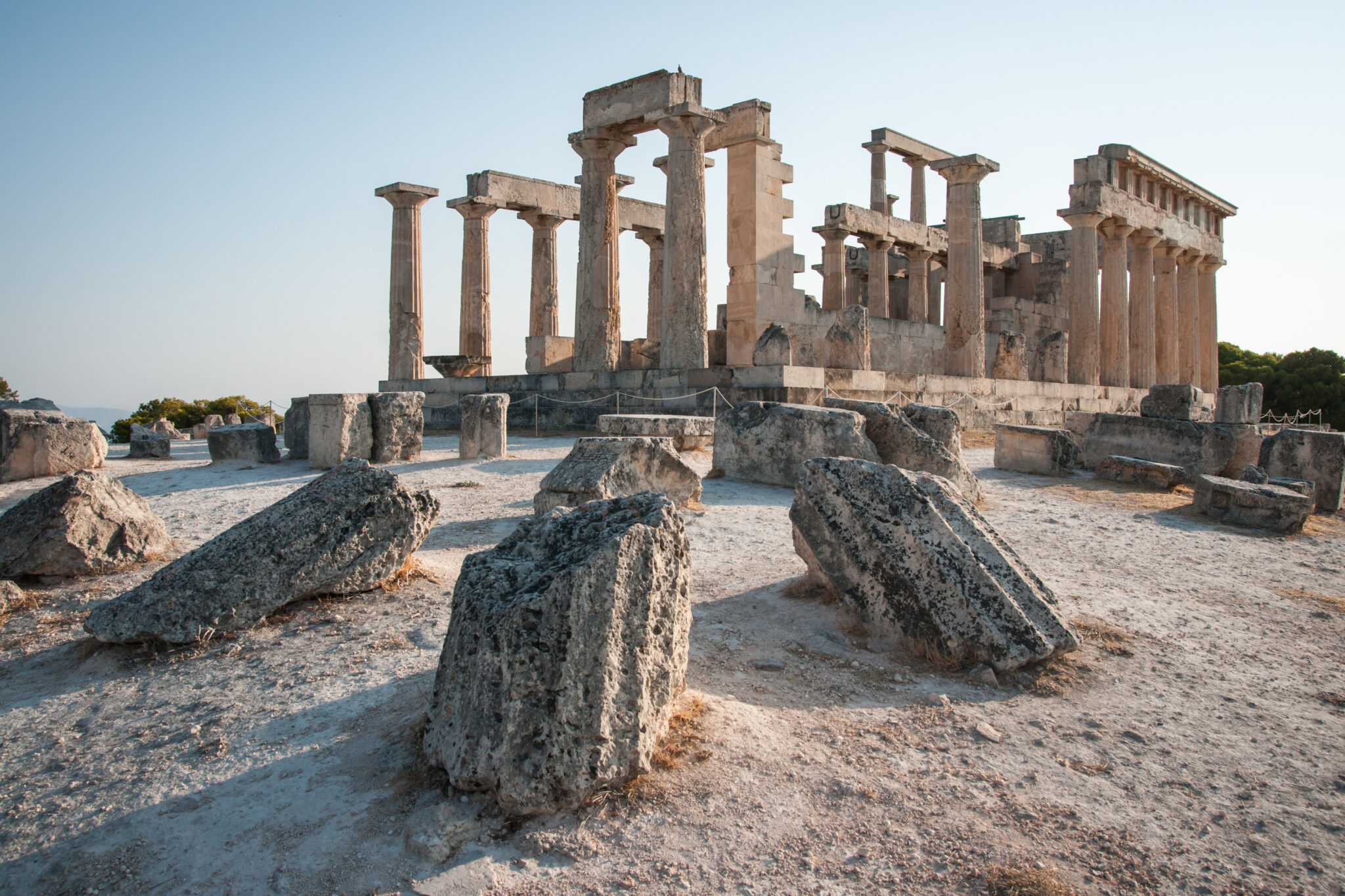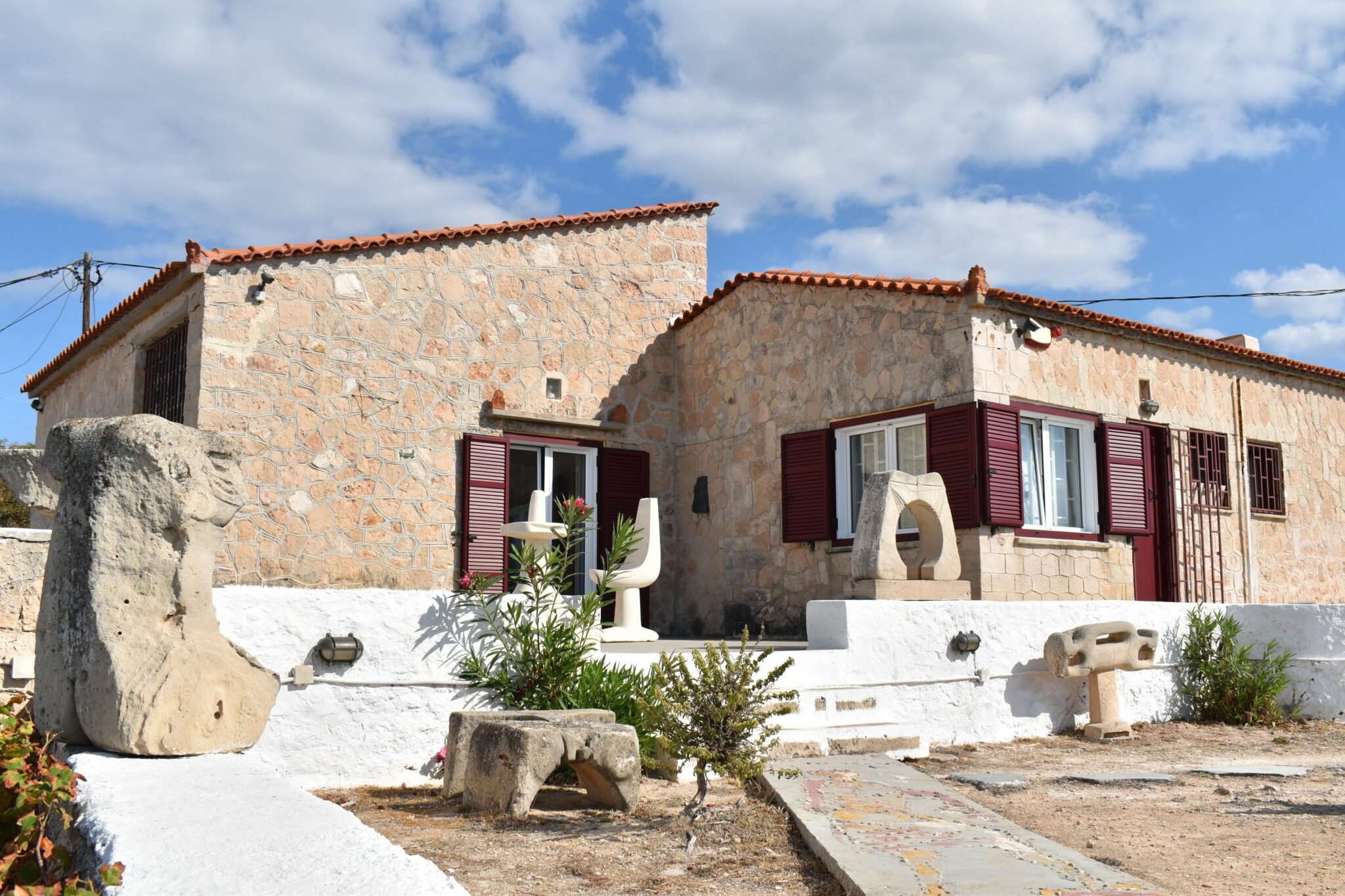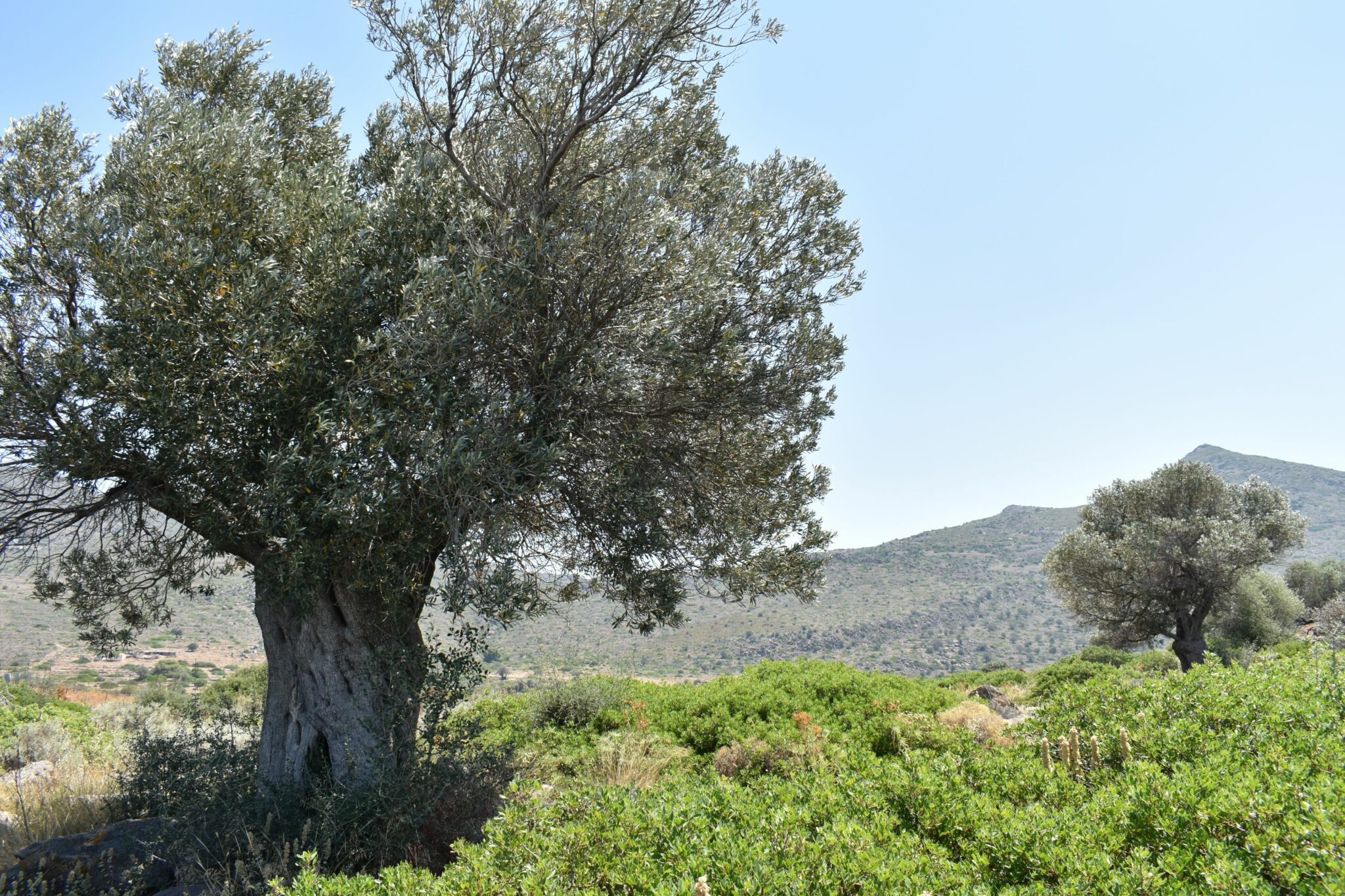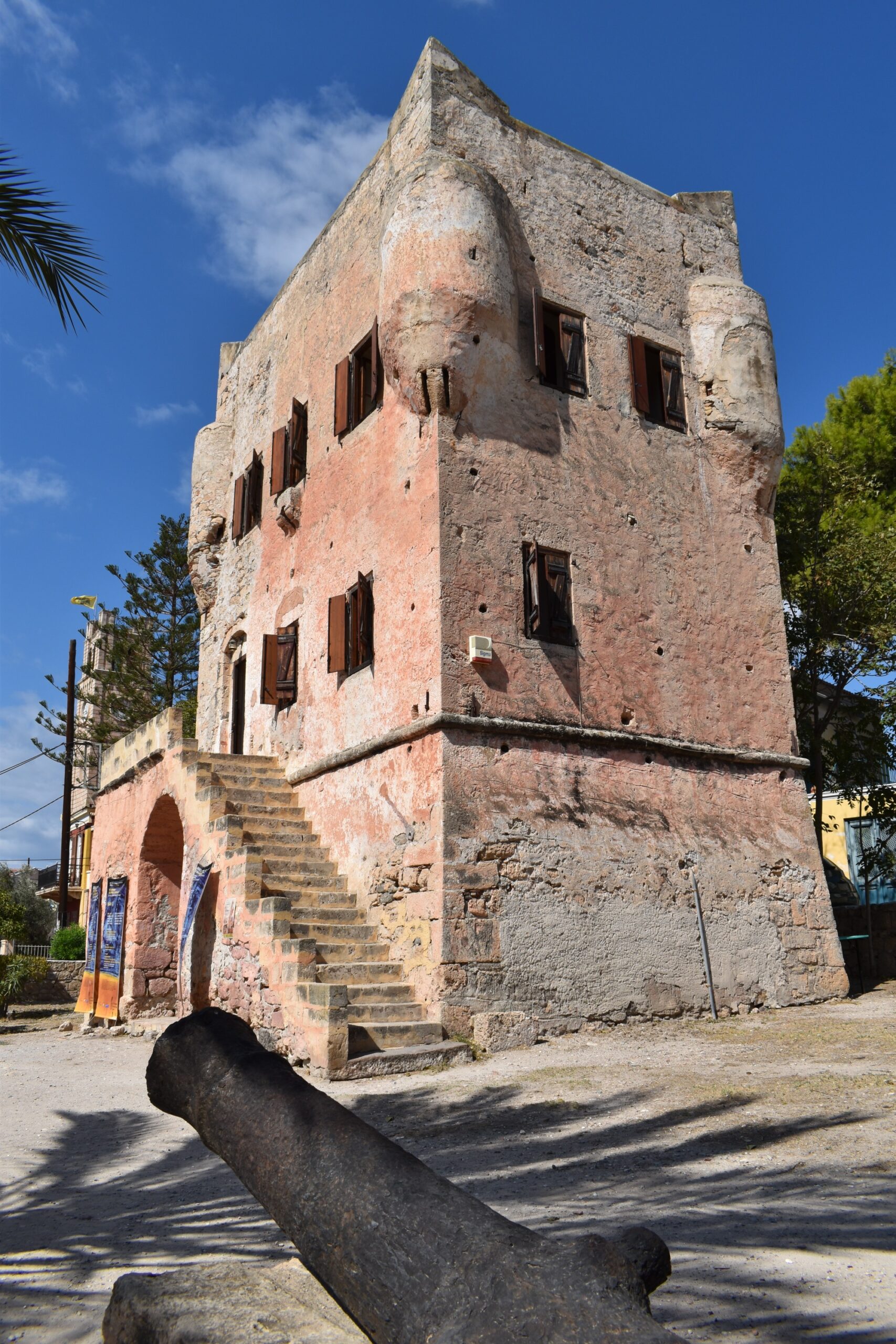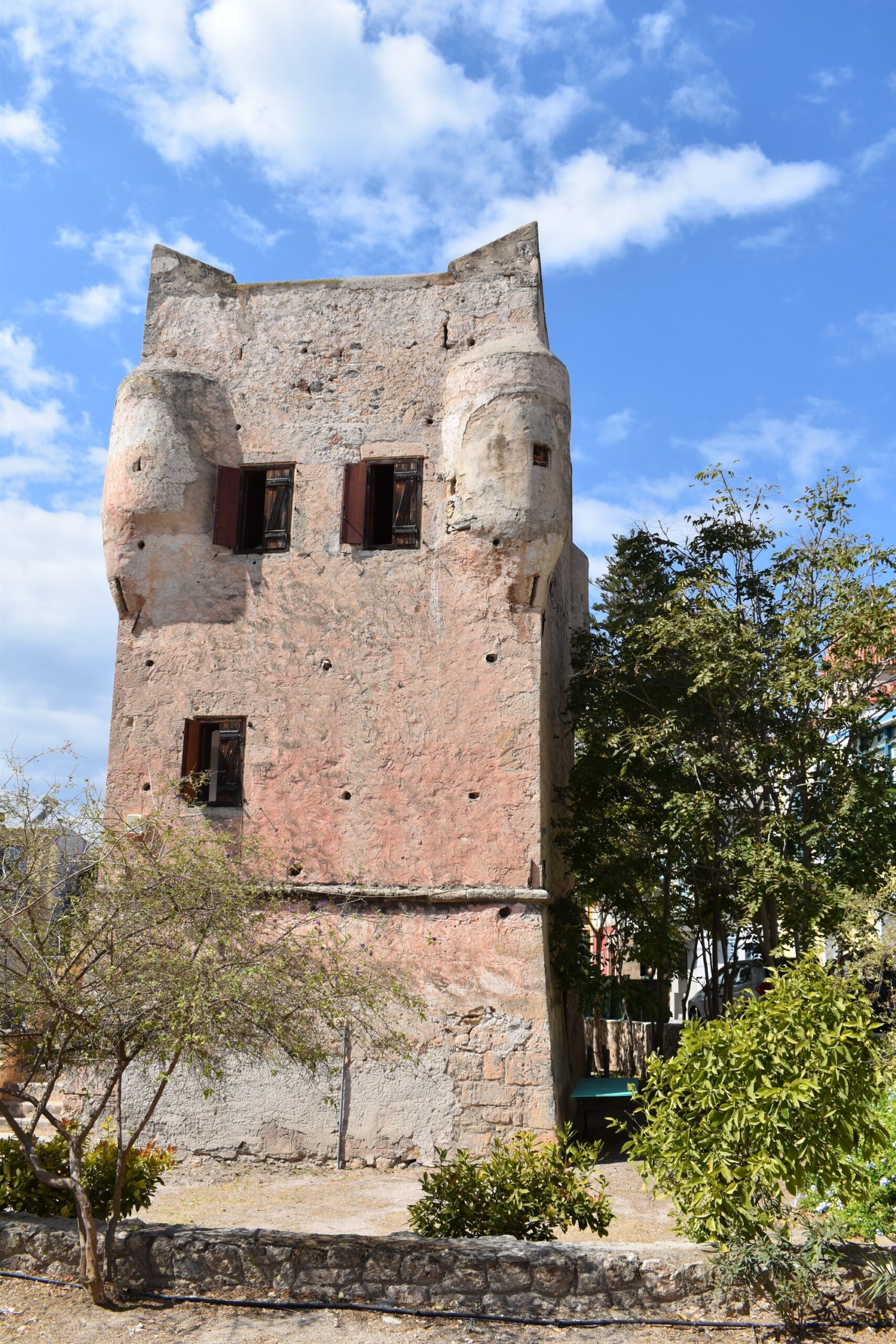Aegina has a rich and multi-layered history to be uncovered and as fortune would have it, many of the places of interest are located in beautiful natural sites, surrounded by alluring mediterranean scenery; pine forested landscapes with the sea and sky as a backdrop.
Temple of Aphaia: The temple, Aegina’s most famous archaeological landmark, is located at the top of a scenic pine-covered hill and was erected around 500-490 BC. Originally the site was dedicated to the local goddess Aphaia, who later came to be identified with Athena. The temple’s impressive architecture, of Doric order, was built with local limestone and is in very good condition, with 24 of the temple’s original 34 still standing strong and gleaming majestically in the sun.
The Archaeological Museum of Aphaia features exhibits and reconstructions of the. earlier Doric temple, which was built c. 570-560 BC and destroyed by a fire in 510 BC (Aphaia, Aegina, tel.: 0030 22970 32398)
Archaeological Site of Kolona: Kolona, a site standing on a hill, was once the Acropolis of the island. It was inhabited since 3500 BC and in antiquity also served as the political and religious centre of the area. Located close to Aegina’s port and the island’s Archaeological Museum, it got its name, which means “column” in Italian and refers to the single remaining column that is still standing, during the Venetian rule.
Archaeological Museum: The museum mainly features finds from the archaeological site of Kolona from prehistoric times to Roman times. You can see large urns of the Early and Middle Helladic periods, ceramics of the Geometric and Archaic periods, Aegean-painted sculptures from the 7th to the 5th century BC and fragments of the pediments of Aphaia among many other exhibits. (tel.: 0030 2297 022248. www.odysseus.culture.gr)
Palaiochora: Built by the Venetians in 1462, this served as the island’s settlement built up a hill as protection from the swarms of pirates who raided the Aegean. Today at this abandoned medieval settlement that was inhabited until the early 19th century, you can see around 33 churches of around 365 that once stood there, and castle ruins. Palaiochora is also called “the Mystras of the Saronic” about the similar, more famous, medieval settlement in the southern Peloponnese, now a UNESCO World Heritage Site.
Christos Kapralos Museum: The former residence of an eminent sculptor has been turned into a museum and is an annex of the National Gallery. It is located on Nikos Kazantzakis street, named after the legendary author, most known for his masterpiece “Zorba the Greek”. Both Kazantzakis and the famous Greek artist Yannis Moralis had residences here, and recently Moralis’ studio has been recreated and opened to the public (LINK: https://www.jmoralis.gr/en/the-aegina-studio/). Find out more about this museum here (LINK: https://www.travel.gr/en/experiences-ee/christos-kapralos-museum-on-aegina-visiting-the-prominent-sculptors-home-and-studio/).
Folklore Museum: Housed in a neoclassical building from 1828, in the heart of Aegina’s main town, the museum presents artwork, utilitarian items, furnishings and traditional costumes among other exhibits related to the island’s inhabitants. On the ground floor is a reproduction of a typical “Village house” with objects of everyday use, weaving utensils, textiles, and agricultural tools, as well as the “Fisherman’s House” with fishing and sponge diving equipment and miniature ship models. The first floor, named “the Aegean House”, features family heirlooms donated by the Irioris Family, including the library, letters, and historical archives of Panagis Iriotis, as well as engravings, paintings and more.
Eleonas: A unique natural space, this ancient olive grove is where centuries-old olive trees still stand proudly today, their trunks like twisted sculptures, each different from the other. It is no coincidence that the olive grove was once used as the setting of a fashion shoot by Hermès. Most of the trees here are estimated to be over 400 years old. Look out for a tree said to be 1500 years old that measures 13 metres around its diamertre. Eleonas belongs to the Monastery of Chrisoleontissa and can be reached from the walking path that starts opposite the beach of Marathonas B (around two kilometres distance).
Tower of Markellos: The construction dates to around the 17th century and is considered to have been part of the Venetian harbour fortification, operating as a watchtower. The tower was renovated in 1802 by the Aegean Revolutionary fighter Spyridon Markellos, from whom it takes its name. During the 1821 Greek War of Independence, it was a hideout for Greek fighters and politicians. Today the tower is usually closed, opening only occasionally to host art exhibitions and artistic events.
Agios Nektarios Monastery: Aegina’s most important religious monument, the monastery is home to 14 nuns and is located on the road to Agia Marina, around six kilometres from Aegina town. It is one of Orthodoxy’s key pilgrimage centres, with many believers visiting it every year, because the saint, whose relics lie in the chapel within the monastery, was said to have conducted several miracles.
Read also:
7 Best Places to Eat in Aegina
Aegina: The most famous of the islands close to Athens
Tour of Aegina, Greece – Neoclassical buildings, pistachios and archaeological sites



